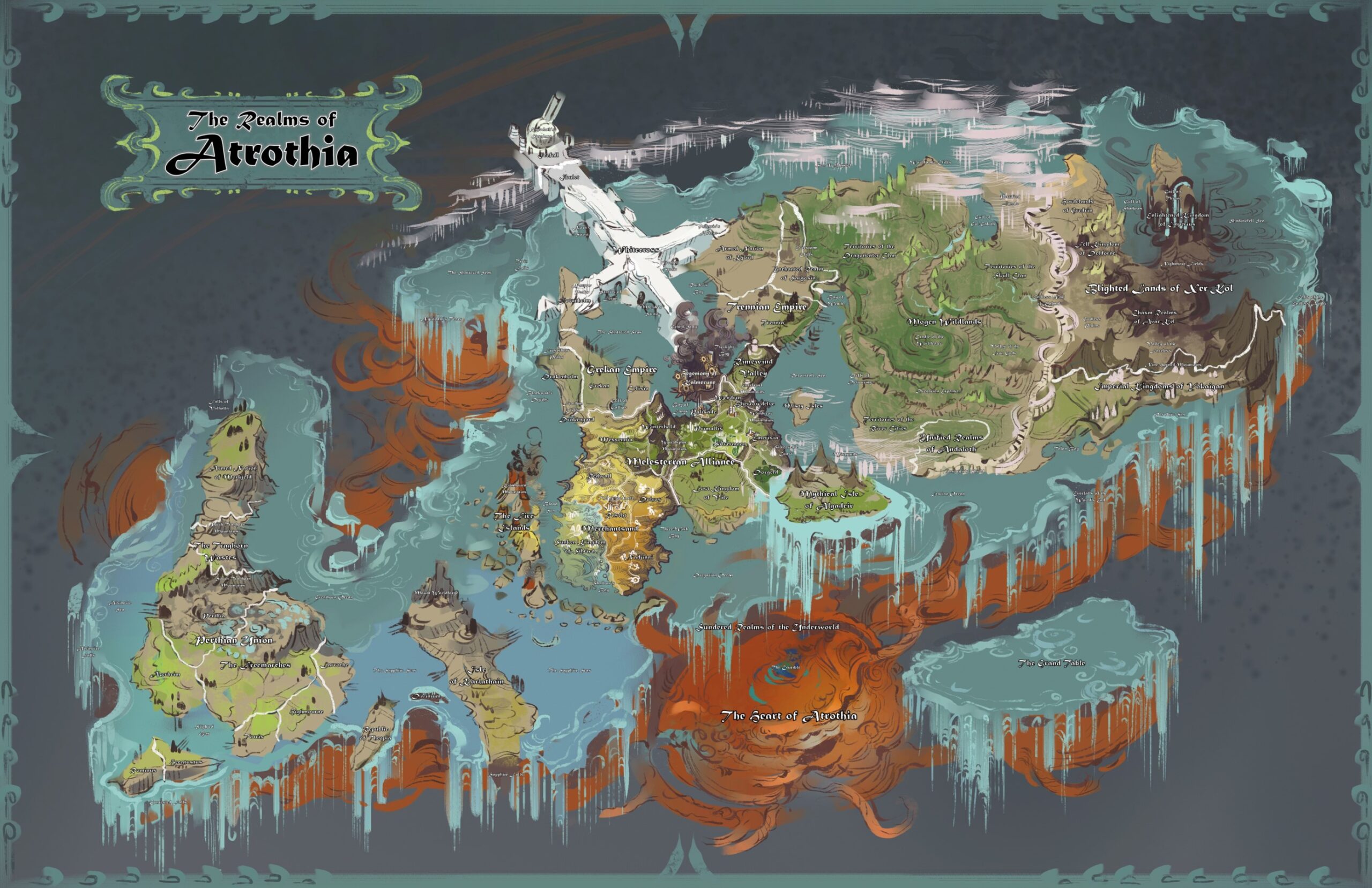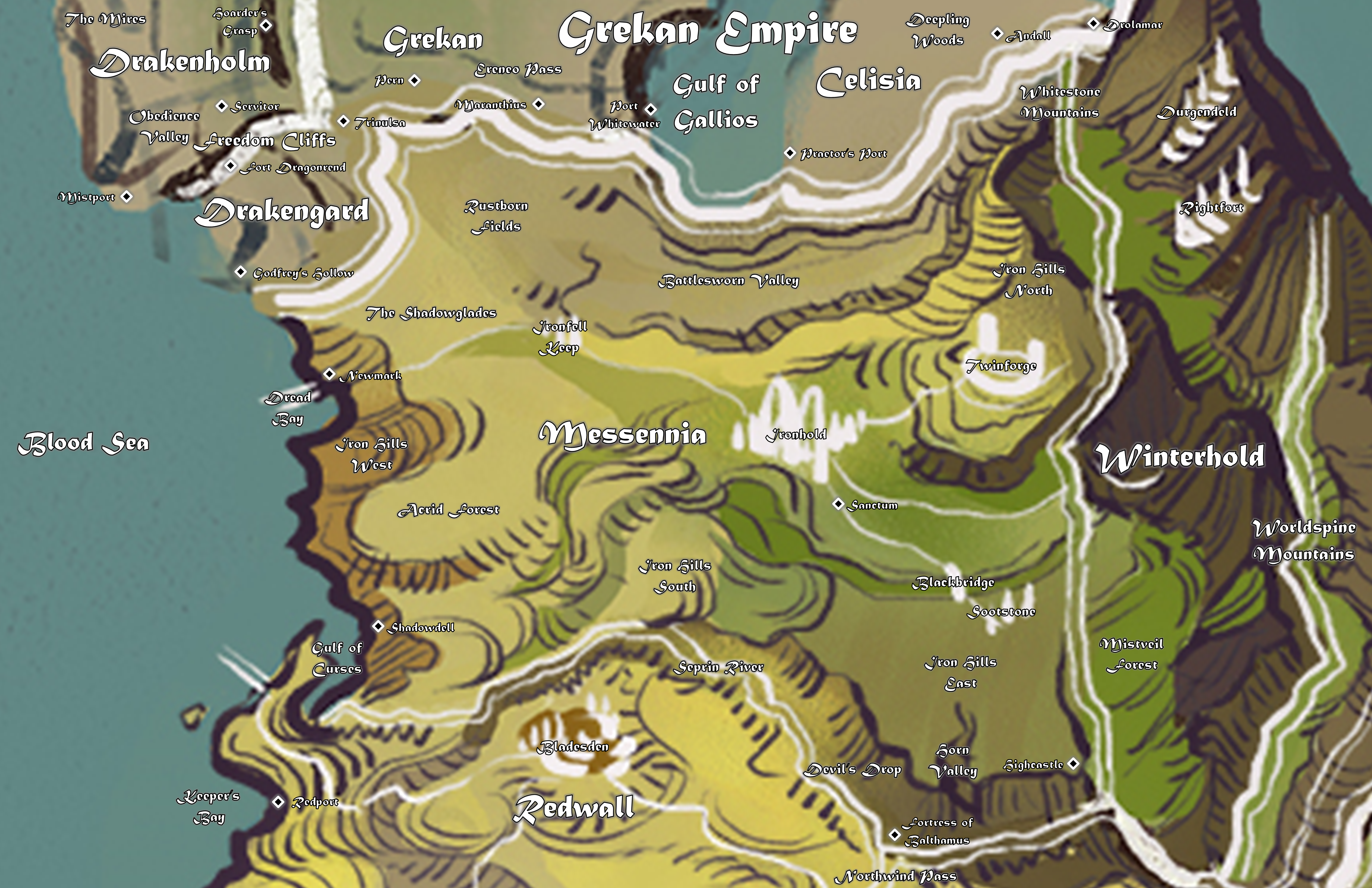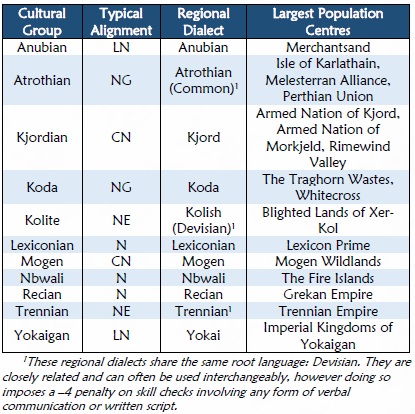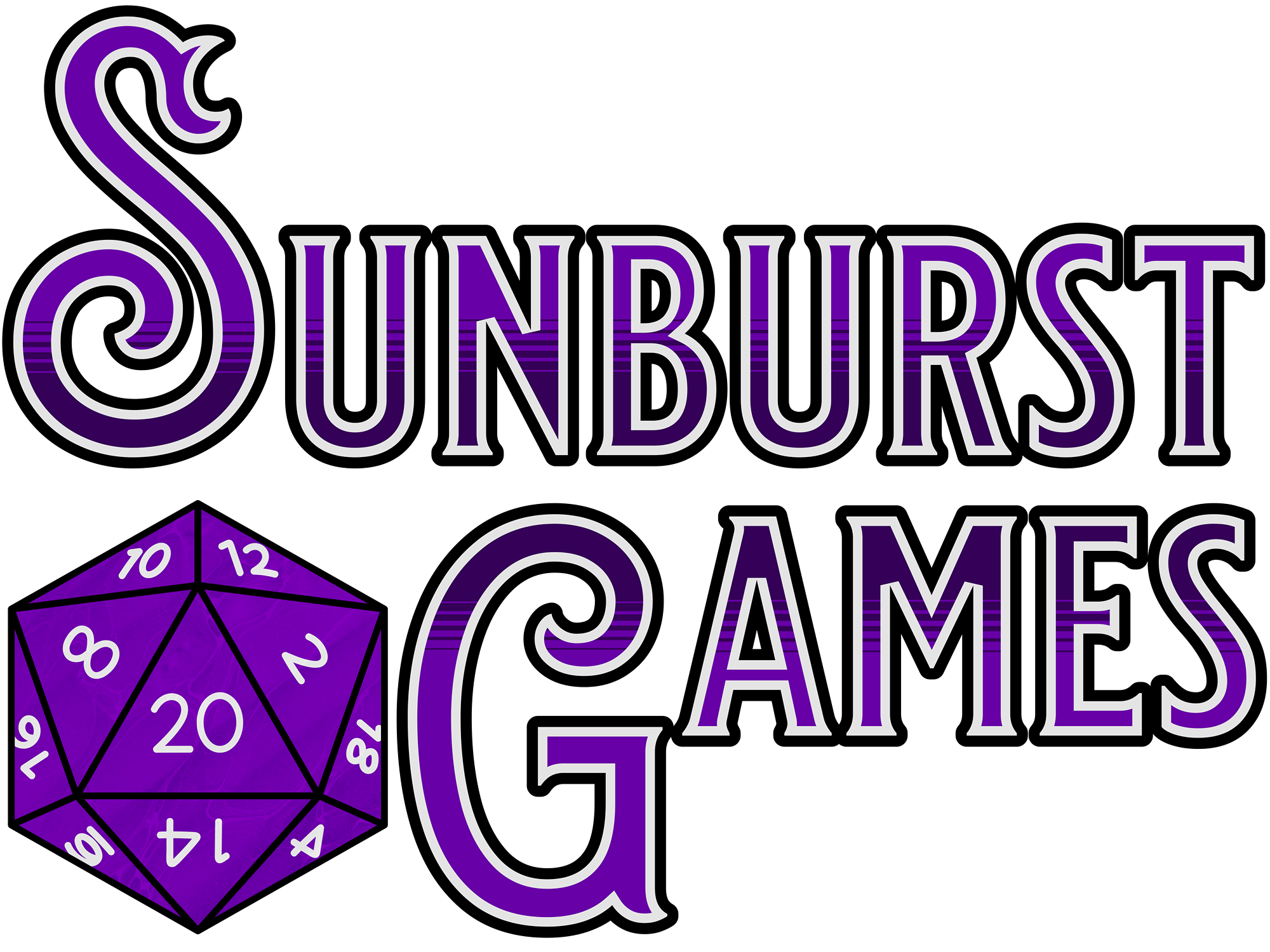The Realms of Atrothia
Welcome to the Realms of Atrothia, a unique campaign setting in which we experience the events of Bloodlines of the Blackfire Heart. While the full Intrepid Realms RPG: Realms of Atrothia is still in the works, as new information is revealed throughout the adventure, we will include it here to expand your experience.
World Map - The Realms of Atrothia

The Bloodlines of the Blackfire Heart is set in the Realms of Atrothia, an unusual world which has been torn asunder by the vile machinations of Xeronoth, the God of corruption, shadows, forbidden rituals, and conquest.
Regional Map - Messennia

The Bloodlines of the Blackfire Heart starts with the PCs being drawn to the city of Highcastle, located in southeastern Messennia.
The Lore Drops
Every episode of the Barely Adequate Podcast provides further details on the Realms of Atrothia through a segment called: Lore Drops. Satisfy your curiosity by delving deeper, getting a refresher, or checking in on update notes by the developer.
The World of Atrothia
First Dropped: Series 1 - Episode 01 - The Beginning Of The End
The planet of Atrothia is a cosmic marvel. After being reshaped by Xeronoth during the Age of Cataclysm for his own nefarious purposes, the world was left a shattered, sprawling disc-like mass, rather than the spherical planetoid it once was. The continents torn asunder by divine intervention, Atrothia now exists as a misshapen mass of lands upon a distorted, twisting magma core. Along its far edges, gravity is twisted and warped, forming waterfalls which turn back upon themselves underneath the world as violently churning swells, endlessly recirculating into the ocean currents once more.
While stories persist of hidden riches, lost continents, and even flourishing civilizations on the so-called Sundered Realms of the Underworld, no recorded expedition has ever returned from passing over the falls at the edges of the world. Whether they met their fates careening off the planet’s surface or returned having seen horrors beyond imagining and plan to take their secrets to their graves, it remains one of the great mysteries of Atrothia.
The City of Highcastle
First Dropped: Series 1 - Episode 02 - Oh Thuvius, Where Art Thou?
Affiliation Melesterran Alliance; Country/Region Messennia
Alignment NG; Type Aristocratic autocracy; Availability B2
Sentient Population 4,500 (80% Humans; 10% Dwarves; 10% Other)
Located on the southeastern edge of Messennia, Highcastle is a sizeable port city built upon the banks of the Seprin, an immense river dividing Messennia and Merchantsand, originating from the Worldspine Mountains and draining into the Gulf of Curses. With the nearby Mistveil Forest and the vast expanse of the Iron Hills, trade resources abound in this prosperous town whose folk live comfortably working for the Lumber Consortium, the Stonemason Guild, or the River Authority.
Ruled by the aristocratic Harrowood family for almost 150 years, the town was originally founded by Baron Radomere Caldicroft almost 200 years ago. He was seduced by a coven of hags known as the Bloodmoon Sisters, and afflicted untold horrors upon the populace until he and the coven were slain by Eberus Harrowood, a swordsman from Ironhold renowned for his skill with a rapier. Stories of Caldicroft’s wrath, and the terror of the Bloodmoon Sisters are still told to this day and bring about the superstitious nature of the populace.
Despite the vast profits from the bountiful resources nearby, life near Highcastle is not easy. The Iron Hills are dominated by ogres and other giants of vile disposition, and the lands of Redwall, to the south, are rife with bandits and brigands fleeing from the grip of the Justicars, or slavers looking for easy pickings in the regions less travelled by law enforcement.
Yet safety can be found from unusual sources. The Mistveil is patrolled by the Ironclaw Clan, a group of werebears who constantly battle the hordes of savage humanoids from the Iron Hills. Likewise, the Fortress of Balthamus, a stronghold of the Templars of the Roads lies to the southwest guarding the Northwind Pass, the only land bridge onto Redwall from Messennia. These territories mark the last bastion of peace and order before the bandit filled territories of Redwall.
The estates of Caldicroft Manor are located north of the city proper and claim a vast swath of the surrounding lands as part of its holdings. These territories are left untouched by the guilds and consortiums and are patrolled by the soldiers paid by the Harrowood estate, a force equally large as the city’s guard, but far better supplied. The manor itself rests upon a cliff side, and is more of a stronghold than a mansion, being originally built as such.
The Justicars
First Dropped: Series 1 - Episode 03 - Follow Your Spiras
The Justicars were originally formed in 1157 BC by the first Emperor of Atrothia, now known only as the Immortal Emperor, to maintain order and quell uprisings within Messennia.
To this day, their authority is even seen among other Melesterran Alliance nations, however within the bounds of Messennia they have held power since before the line of Melesterith, being officially second only to the crown in influence.
Led by a council of High Justicars, they are concerned primarily with maintaining their influence over Messennia, free of crown oversight, leaving many to believe they are corrupt tyrants, rather than true agents of the law.
The Age of Cataclysm
First Dropped: Series 1 - Episode 04 - Into The Void!
Fractured history, a period of time denoted as DC (During Cataclysm), marks the most significant period in Atrothia’s timeline, the Age of Cataclysm, when Xeronoth enshrouded the planet in darkness, and altered the fabric of reality to create the Shadow Nexus. The exact length of this Age is unknown, as the vast amounts of cosmic energies unleashed during Xeronoth’s machinations caused time to warp and bend unnaturally, with some accounts being just 5 years, and others 5,000 or more.
A period of unknown years where a consuming darkness fell upon Atrothia, the continents split apart, the world was torn into its current disc-like shape, and the Forgotten Gods were slain by Xeronoth. The God of corruption stole the cosmic energies from Forgotten Gods to attain greater heights of power, before finally twisting the planet to create the Shadow Nexus where the ley lines of Atrothia overlapped with those of the Shadow Plane, shearing apart the barrier to the Great Beyond, all in an attempt to ascend beyond the limits of the gods themselves. The armies of Xer-Kol spread to every corner of the world, and nearly every nation fell beneath their banner.
The Age of Cataclysm came to an end in 1 AC, when an alliance of the remaining gods combated Xeronoth on the Mythical Isle of Algadeir, eventually sealing him away within a prison made from the very Shadow Nexus he himself had created. After decades of horror, the barrier to the Great Beyond was restored, with the god of corruption bound to both the Shadow Plane and the site of Gailen’s Throne in Xer-Kol.
Developer Note: The terms Cataclysm and Calamity can be used interchangeably when talking about this period.
Time & Calendars
First Dropped: Series 1 - Episode 05 - Old Kasif? More Like Young And Spry Kasif
Atrothia was reshaped on a cosmic level during the Age of Cataclysm by Xeronoth, the God of Corruption. It currently uses a 24-hour day, a 7-day week, a 4-week month, and a 12-month year. This results in a calendar with exactly 336 days each year. The months are named after Xeronoth, the cause of the Age of Cataclysm, as well as the eleven Old Gods who rallied together to imprison him within the Shadow Nexus.
In order, the months are:
- Xeronus, named after Xeronoth, the God of corruption.
- Corberith, named after Corberus, the God of discovery.
- Davren, named after Davros, the God of redemption.
- Nyrodith, named after Nyrodath, the God of free-will.
- Morikomus, named after Morikomo, the Goddess of desire.
- Tzaleken, named after Tzalakech, the God of the dawn.
- Progeniten, named after Progenitor, the Deity of natural order.
- Kazzeus, named after Kazzeum, the God of vengeance.
- Ankhanatrus, named after Ankhanatra, the Goddess of oppression.
- Malvoren, named after Malvorkhe, the Deity of the elements.
- Reith, named after Lady Rei, the Goddess of honor.
- Sojouren, named after Soujourn, the Goddess of journeys.
The Nature of Divinity
First Dropped: Series 1 - Episode 06 - Bornello's Bordello
While the name may invoke thoughts of all-encompassing power and cosmic creation, deities are rather revered beings of immense power who are capable of granting supernatural abilities to those who follow their dogma, doctrine, or teachings.
The strength of a deity is connected directly to a variety of sources from which they harness cosmic energy, such as their scope of influence, the number of their followers, and even their own age or accomplishments. All known deities are classified within a scale of comparable strength, being Lesser (Ascended Tier I), Minor (Ascended Tier II), Major (Ascended Tier III), and Almighty (Ascended Tier IV).
Lesser Deities: The most commonly encountered are demon lords, arch devils, empyreal lords, fey lords, archangels, and ascended mortals; they are not considered True Gods. Such beings are Ascended Tier I (CR 22 to CR 39), possess an array of abilities beyond their normal kin, and have mastery of up to four domains.
Minor Deities: While far more powerful than Lesser deities, they are still among the least powerful True Gods. Such beings are Ascended Tier II (CR 40 to CR 59), and have mastery of up to five domains.
Major Deities: They are among the most powerful of the True Gods. Such beings are Ascended Tier III (CR 60 to CR 79), and have mastery of up to six domains.
Almighty Deities: These rare few stand atop the pantheon, as the undisputed pinnacle of divine power among the True Gods. Such beings are Ascended Tier IV (CR 80 to CR 99), and have mastery of up to seven domains.
Developer Note: The scale of divine power, as originally aired during this episode, was Minor (Ascended Tier I), Lesser (Ascended Tier II), Intermediate (Ascended Tier III), and Greater (Ascended Tier IV). These original naming conventions made the strength of all deities except Xeronoth sound less impressive than they actually were, thus the need to implement the change.
Tyranus, God of Righteousness
First Dropped: Series 1 - Episode 07 - The Gobbos Are Garbage
LG Minor Deity (Tier II)
Domains: Air, Glory, Good, Law, Rune.
Favored Weapon: Greatsword.
Portfolio: God of storms, zeal, righteousness, knights, and glyphs.
Epithets: Stormbringer, Thunderous Archangel, the Saint of Skies, Platinum Knight, and the Accursed Fate Unbound.
Symbol: A pair of crossed greatswords, each with a single-winged cross guard.
DEPICTIONS
A platinum-feathered angel with glowing blue runes on his skin, and a red sash across his chest; either wearing plate armor or barechested, he wields a greatsword with an ornate winged cross guard which can split in two.
MYTHOS
Tyranus was once an archangel in the service of a Forgotten God (an Old God slain by Xeronoth), who was cast down from the heavens and cursed with mortality at the end of the Age of Cataclysm. His past all but forgotten, he joined a group of wandering heroes, who each eventually rose to divinity themselves after stopping the foul machination of Orcus, God of the Underworld.
Davros, God of Redemption
First Dropped: Series 1 - Episode 08 - A Horse Named Rexford
LN Major Deity (Tier III)
Domains: Animal, Law, Nobility, Rune, Strength, and War.
Favored Weapon: Lance.
Portfolio: God of cavalry, judgment, duty, wards, redemption, and warfare.
Epithets: Iron Griffinlord, the First Justicar, Corruption’s Keeper, the Endless Warden, Redeemed-in-Chains, and the Grey Soldier.
Symbol: A gauntleted fist wrapped in iron chains.
DEPICTIONS
A weathered human wearing battleworn plate armor, with iron chains wrapped around each forearm; often depicted astride an iron griffin. Most AC depictions also show iron chains wrapped around his waist like a belt, locking an accursed bastard sword into a rune-covered scabbard.
MYTHOS
Once the mortal ruler of an ancient kingdom, he fell to depravity after being gifted a cursed blade by the fabled Immortal Emperor from the Atrothian Empire of antiquity. Twisted body and mind by its accursed influence, he committed all manner of atrocities for over a millennia, before eventually destroying the malevolent artifact as atonement for his many lifetimes of sin. Yet, this act of redemption fueled his ascent to divinity.
Davros is among the few Old Gods who survived the rise of Xeronoth. The accursed blade he now safeguards is the Edge of Reason, the nightmarish blade torn from the grip of Xeronoth himself during the Battle of Gods, which brought an end to the Age of Cataclysm.
Xeronoth, God of Corruption
First Dropped: Series 1 - Episode 09 - Infestrogation
NE Almighty Deity (Tier IV)
Domains: Darkness, Evil, Knowledge, Magic, Trickery, Void, and War.
Favored Weapon: Bastard sword.
Portfolio: God of shadows, corruption, deception, forbidden rituals, treachery, space, and conquest.
Epithets: Shadowed King, the Source of Reason, Truthspeaker, Seeker-in-Shadows, the God’s Unseen, Worldshaper, and the Consuming Shade.
Symbol: A gaunt, spectral hand clutching a black disc.
DEPICTIONS
A vaguely humanoid man engulfed in a robe-like void of shifting tendrilous shadows; revealing only his gaunt, grasping hands devoid of all color, and his head, which while largely concealed by a hood of all-consuming darkness, appears to be the vastness of the cosmos itself. Often shown wielding an accursed bastard sword, holding a fearsome staff, clutching a black disc, or some combination thereof.
MYTHOS
Xeronoth is the most powerful of all known deities, yet, despite his great powers, he was once a mortal man consumed by all of humanity’s darkest aspects—a warmongering wizard who sought ever-greater heights of knowledge, power, and influence. His efforts would eventually lead him to steal the divine spark from the remains of an ancient deity, and harness forgotten magics to force his own divine ascension. His schemes, however, had only just begun, as he turned rival gods against one another, and claimed their divine sparks as his own.
Xeronoth’s great rise to power came when he unleashed the Shadow Nexus, a convergence of realities between the realm of the Material Plane, and Xeronoth’s home realm of the Shadow Plane, creating a pathway for his direct manipulations of reality on a cosmic scale—thus began the Age of Cataclysm. As he reshaped reality to his whims, the Old Gods rallied together in opposition, only to see untold numbers of Forgotten Gods erased from existence by Xeronoth’s reality-severing blade, the Edge of Reason. So vast were his powers, that his eventual defeat during the Battle of Gods resulted with his imprisonment within the Shadow Nexus, rather than his outright destruction.
Now, in the heart of Xer-Kol, Xeronoth’s malign presence slowly seeps from the Shadow Nexus, tainting all of Atrothia with his corruption—temping desperate and despicable souls alike with his dark gifts and twisting any who feel his presence, all the while weakening the very barriers which keep his corruptive influence at bay.
Messennia, the Nation of Blood and Iron
First Dropped: Series 1 - Episode 10 - Chainbreaker's On Fire
Affiliation Melesterran Alliance; Territories Acrid Forest, Battlesworn Valley, Blood Sea, Devil’s Drop, Dread Bay, Gulf of Curses, Horn Valley, Iron Hills, Rustborn Fields, the Shadowglades.
Alignment LN; Size Gargantuan (Approx. 760,000 sq.-miles; 800 miles x 950 miles)
Messennia rests on the west side of the Worldspine Mountains, and stretches eastward all the way to the Blood Seas. Its initial founding dates back to 1,157 BC by the First Atrothian Empire, when it was established to control the western reaches of the known world from Ironhold, an ancient fortress lost since the times of Old Dregarion, which is now surrounded by a sprawling city of the same name. Messennia is a founding member of the Melesterran Alliance, having representatives among those who first devised the treaties of the Immortal Plains Concordant in 88 AC, during the 128 Years of Chaos.
Messennia has been in conflict with the Grekan Empire, its neighbor to the north, for nearly two millennia, and claims a vast swath of territory along their borders, leading to yearly skirmishes between the two nations. Despite this, Messennia receives no official aid from the Melesterran Alliance, since the land feud long-predates its founding, persisting in some form for nearly two millennia; though it more recently escalated to outright war in 922 AC with the rise to power of Grekan’s current ruler, Emperor Gaius Synistor.
The cast wealth of Messennia is earned in iron and blood—the bounties of the Iron Hills, so named for the mineral rich, but largely barren, rocky landscape, and the prowess of its battle-hardened mercenary legions. It also boasts the world’s highest population of dwarves and giants, owing largely to the early conquests of the First Atrothian Empire, and these people’s importance to its military machine. Even now, much of Messennia’s military strength is attributed to mercenary companies with dwarven soldiers or ogre shock troops among their ranks.
The Dregarion Empire
First Dropped: Series 1 - Episode 11 - Heshlog's Heshlog
The first true civilization of intelligent beings on Atrothia formed by a council of nine dracolyte tribes, the Dregarion Empire held its dominion for millennia. Persisting through the Age of Invasion, and into the Age of Awakening, the Dregarion Empire stands alone as the most successful civilization ever recorded.
While little is known about the Dregarion Empire, its legacy lives on in modern times through its highly sought-after magical creations such as dragoneyes, mana shards, and the superior metal alloy known as palatium. The Dregarion Empire officially met its end in 10,744 BC, with the sealing of Kalmak (which remained sealed until 942 AC).
The Melesterran Alliance, United Kingdoms of the Immortal Plains Concordant
First Dropped: Series 1 - Episode 12 - Chains On The Brain
Type Democratic Republic; Countries Bherrowdelve, Dolros, Dorgeld, Drakengard, Emerisia, Messennia, Nadjinni, Palisade, Primallis, Raseht, Redwall, Sihrwa, Silvermoon, Winterhold, Wendrin.
Alignment LN; Size Colossal (Approx. 4,320,000 sq.-miles; 2,400 miles x 2,700 miles).
The Melesterran Alliance is one of Atrothia’s largest political pacts; a group of nations which have formed continent-spanning trade agreements, and rally together under a single banner in times of foreign invasion. Largely consisting of the nations occupying the territories once at the heart of the First Atrothian Empire, it’s most influential founders are the ancient kingdoms of Palisade, Messennia, and Merchantsand, with the megalithic cities of Ironhold and Palisade playing host to most all of the alliance’s politics. Until recently, the Kingdom of Vale was also a long-standing alliance member, however they were expelled after the rise of the so-called “Demon King” Kolos, whose reign was built upon an insurrection which ended the kingdom’s royal line in 957 AC.
The political agenda and policies of the Melesterran Alliance, both at home and abroad, are dictated by the Melesterran Senate, a staggering array of representatives who review and vote upon all matters of import regarding alliance nation interests beyond their own borders. The official leader of the Melesterran Alliance is Queen Selena Melesterith VII, the ruler of Palisade, whose line has been inheritor to the position since the Melesterran Alliance was first founded with the treaties of the Immortal Plains Concordant in 88 AC. Although largely just serving a figurehead, she holds the authority to wrest complete military control from the senate during emergencies or times of war.
The First Atrothian Empire
First Dropped: Series 1 - Episode 13 - The Chains Will Set You Free
Formed by an all but forgotten tyrant and his heretical general during the Age of Warfare—remembered only as the Immortal Emperor and the Judge of Fate—this duo conquered vast swaths of territory from 1,157 BC to 978 BC. Their continent-spanning empire occupied nearly all of what is now known as the Melesterran Alliance, and maintained absolute control over their empire’s territories, until these ageless warlords suddenly vanished in 132 BC.
The silver dragon Cryoterith assumed control in 131 BC, and her sweeping political changes brought peace to the formerly warmongering nations, until their weakened military state led to its collapse during the Age of Cataclysm.
The Diversity of Humanity
First Dropped: Series 1 - Episode 14 - The Devil's Thorn
On Atrothia, humans have split into several distinct peoples, each of which possesses their own regional dialect, culture, physical characteristics, and typical alignment.

